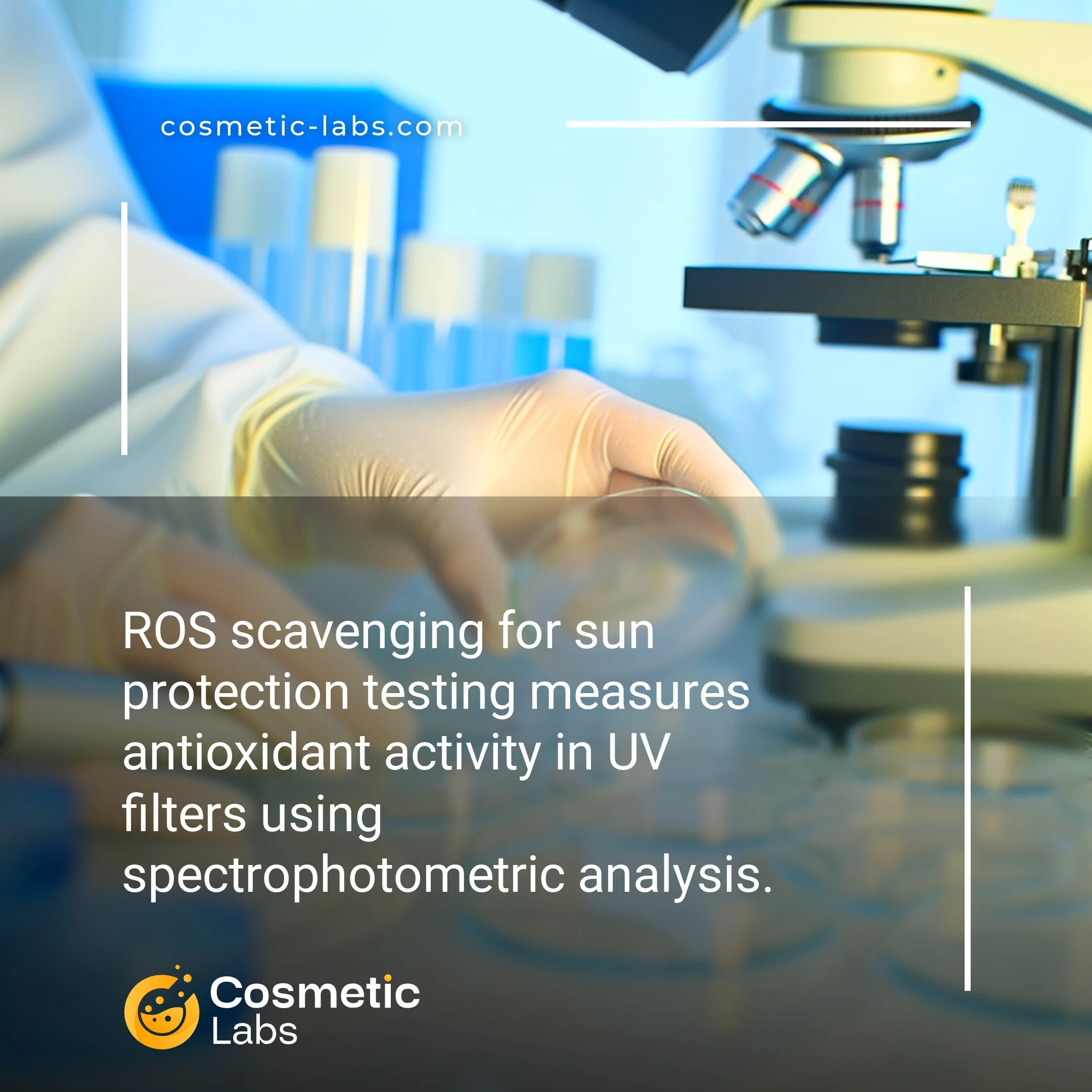ROS Scavenging Testing for Sunscreen Antioxidant Protection

What is ROS scavenging?
ROS scavenging for sun protection testing is a laboratory method that measures how well sunscreen ingredients neutralize reactive oxygen species generated by UV exposure. Our partner labs use DPPH and ABTS assays to quantify antioxidant activity, providing data on how formulations prevent oxidative skin damage beyond traditional SPF measurements. This testing reveals whether your sunscreen actively fights free radicals, not just blocks UV rays—a key differentiator for premium anti-aging sun protection products.
Why do you need this service?
Cosmetic labs use ROS scavenging assays to validate antioxidant claims in sunscreen formulations, measuring how effectively ingredients like vitamin C, tocopherol, and botanical extracts neutralize free radicals generated by UV exposure. These tests help brands demonstrate superior photoprotection beyond SPF ratings, supporting marketing claims about anti-aging benefits and skin damage prevention that consumers increasingly demand in premium sun care products.
Who provides ROS scavenging services?
All cosmetic labs providing ROS scavenging services
There is no company providing these services at the moment.
ROS Scavenging Testing for Sun Protection Products
ROS scavenging assays measure how well sunscreen ingredients neutralize reactive oxygen species generated by UV exposure. These tests help brands validate antioxidant claims and demonstrate protection beyond basic SPF values.
Laboratory Testing Methods
Labs use multiple approaches to evaluate antioxidant activity in sun protection formulations. The DPPH radical scavenging assay provides quick screening results, while ORAC testing measures oxygen radical absorbance capacity over time.
Common testing protocols include:
- DPPH free radical neutralization assays
- ABTS radical cation decolorization tests
- Superoxide dismutase activity measurements
- Lipid peroxidation inhibition studies
Results typically show IC50 values and percentage inhibition rates at different concentrations.
Product Development Applications
ROS scavenging data supports marketing claims about anti-aging benefits and cellular protection in sunscreen products. Brands use these results to differentiate their formulations from basic UV filters alone.
Testing helps optimize ingredient combinations and concentrations. Labs can compare different antioxidant systems like vitamin C, vitamin E, and botanical extracts to find the most effective blend for your specific formula.
Connect with specialized testing labs on our platform to validate your sun protection product’s antioxidant performance and support your regulatory submissions.
Practical Applications of ROS Scavenging Sun Protection Testing
ROS scavenging testing applications help cosmetic labs validate antioxidant activity in sunscreen formulations and determine how effectively products neutralize free radicals generated by UV exposure.
Antioxidant Sunscreen Development
Labs use DPPH assays and ABTS radical scavenging tests to measure antioxidant capacity in sunscreen formulations containing vitamin C, vitamin E, or botanical extracts. These tests determine IC50 values, which indicate the concentration needed to neutralize 50% of free radicals. Product developers rely on these metrics to optimize antioxidant levels and create dual-action formulas that block UV rays while preventing oxidative skin damage.
Testing protocols typically run 24-48 hours and generate quantitative data showing radical neutralization efficiency across different pH levels and storage conditions.
Anti-Aging Sun Care Validation
Cosmetic labs apply ROS scavenging tests to validate anti-aging claims in premium sun protection products. ORAC (Oxygen Radical Absorbance Capacity) testing measures how well formulations protect against peroxyl radicals, while hydroxyl radical scavenging assays evaluate protection against the most damaging free radicals formed during UV exposure.
These tests support marketing claims about photoaging prevention and help brands differentiate their products in the anti-aging suncare market. Results typically show antioxidant activity levels ranging from 100-5000 μmol TE/g depending on active ingredients.
| Test Method | Target Radicals | Typical Results Range | Testing Duration |
|---|---|---|---|
| DPPH Assay | Stable free radicals | 10-90% inhibition | 30 minutes |
| ABTS Method | Cation radicals | 100-5000 μmol TE/g | 6 minutes |
| ORAC Testing | Peroxyl radicals | 500-15000 μmol TE/g | 35 minutes |
| Hydroxyl Radical | OH radicals | 20-80% scavenging | 1 hour |
Connect with specialized cosmetic labs on our platform to access ROS scavenging testing services for your sun protection formulations.
